Updated November 2025
Lisbon, Portugal. The city that stole my heart. I literally left a piece of me there. It’s just something about the city that speaks to me. We spent 7 glorious days in Lisbon. There is so much to see and do and again, we could not do it all. Because we are not just vacationing and actually living while we visit these places, we have to take down days, days we stay in and work, do school work, laundry, rest and relax.
Where we stayed was so centrally located we walked to most things we wanted to do. Granted some walks were long but never boring. If you’re planning your own Lisbon itinerary, I really recommend this “slow travel” pace, build in rest days between big sightseeing days so you actually enjoy the city instead of racing through it.

A (Very) Short History of Lisbon
Before we get into what we did, a little context makes Lisbon even more special.
Lisbon is one of the oldest cities in the world and the second-oldest capital in Europe after Athens. Long before it became Portugal’s capital, the area was inhabited by pre-Celtic tribes, then settled by the Phoenicians, later taken over by the Romans (who called it Olissipo), and eventually ruled by the Moors until the Portuguese reconquered it in 1147. Lisbon became the capital in the 13th century and has been the political and cultural heart of Portugal ever since.
Its location on the Tagus River turned it into a major port during the Age of Discoveries. Ships sailed from here to Africa, Asia, and the Americas, and a lot of the wealth from that era is still visible today in the grand squares and Manueline (late Gothic) architecture, especially around Belém.
On November 1, 1755, a massive earthquake followed by a tsunami and fires destroyed most of the city, including the royal palace that once stood where Praça do Comércio is today. The downtown you see now, Baixa, with its grid of streets and big squares—is part of the rebuilding plan that came after that disaster.
Knowing that history made walking those streets feel even more powerful. Lisbon is gorgeous, but it has also survived a lot.
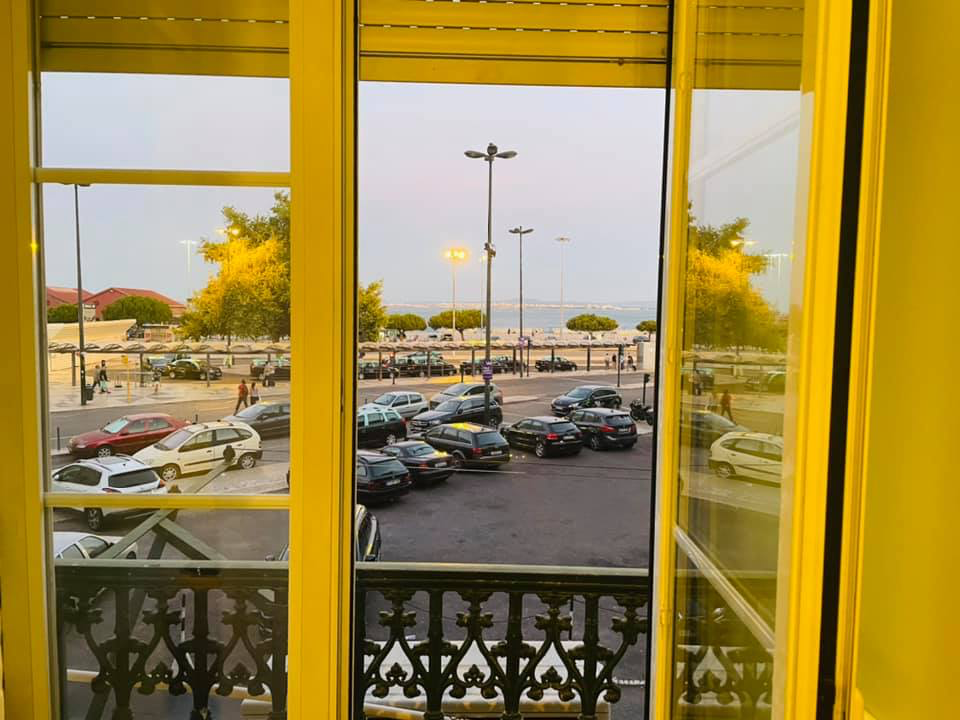
Where to Stay in Lisbon (and Where We Based Ourselves)
We stayed in a centrally located area and could walk almost everywhere we wanted to go. That’s my #1 tip for Lisbon: stay central if you can.
Great neighborhoods to base yourself:
- Baixa & Chiado – Flat(ter), super central, close to Praça do Comércio, shops, and restaurants.
- Alfama – Lisbon’s oldest neighborhood, full of narrow, cobblestoned streets, Fado music, and local life. More hills, but so much character.
- Avenida da Liberdade / Rossio area – Still central, with good public transport connections and a mix of local and tourist vibes.
If you’re traveling with kids or staying longer, look for an apartment near a metro line or tram stop, with a washing machine if possible. Lisbon is a city where you will sweat, walk, and repeat. Laundry days are a blessing.
Our Favorite Things to Do in Lisbon (With Kids)
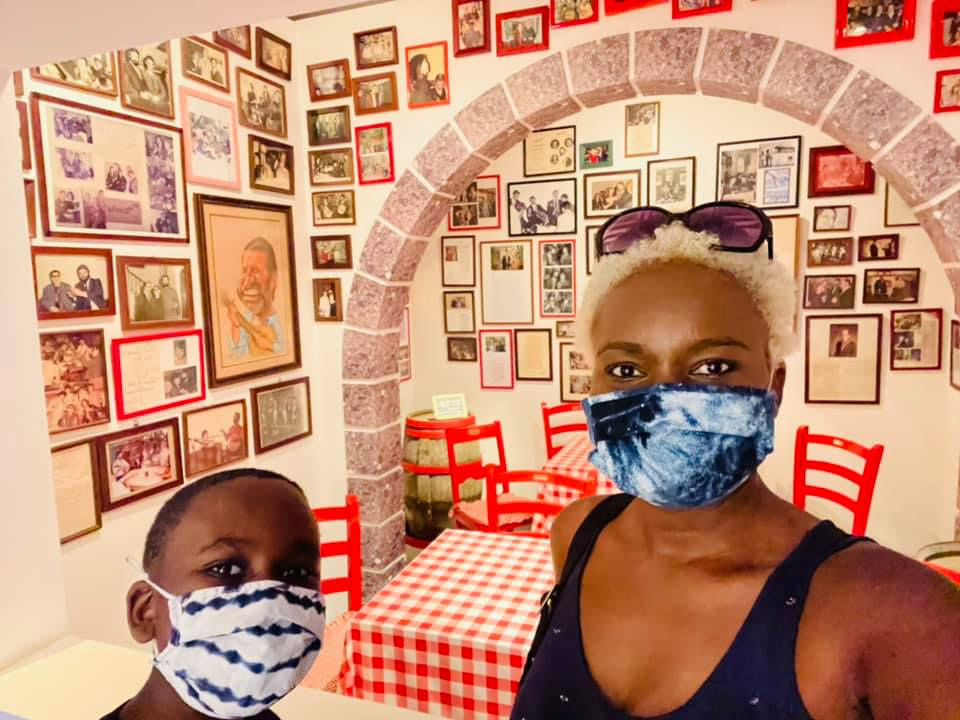
Museu do Fado: Learning Portugal’s Soul
On our first day we visited Museu do Fado. Did I know what Fado was before Lisbon? Did I even know it existed? No, but now I do and I am forever grateful. The kids had the best time. I did not know they would love it so much. They were talking to each other about the music, the censorship, which singer they loved and so much more.
The museum contains the heart and soul of Portugal’s peculiar brand of music, the fado. You get to learn from seeing photos, artifacts, and instruments. Listen on the handheld speaker you are given upon entry. Makes everything come together so perfectly.
Fado itself is a traditional Lisbon music style, full of emotion and saudade, that deep, untranslatable mix of longing and nostalgia. It emerged in Lisbon’s working-class neighborhoods in the 19th century and is now recognized by UNESCO as Intangible Cultural Heritage.
Tips for visiting Museu do Fado:
- Go earlier in your trip, it’ll make hearing live Fado in Alfama later even more meaningful.
- Plan 1–2 hours so you aren’t rushing the exhibits and audio.
- Combine it with a wander through Alfama before or after.
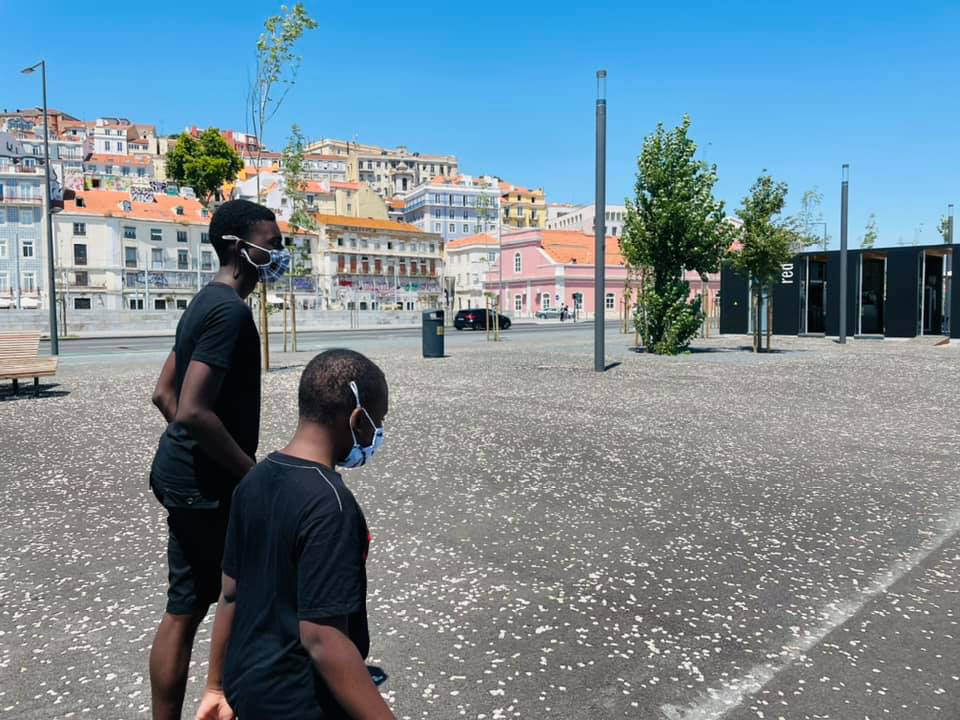
Walking Along the Tagus River & Through Alfama
Walking alongside the river became a thing we did. It is absolutely beautiful and a nice, fun and free activity. Lots of places to eat, though some are closed because of the current situation. Boats docked you can look at and the view is amazing.
We also did our fair share of walking through the neighborhoods. The steep cobblestoned streets of Alfama, one of Lisbon’s oldest areas, are lined with shops selling traditional crafts and cafes. Tons of local eateries selling delicious food, wine, and sweets. Walking at night we were mesmerized by beautiful Fado music coming from some of the area’s long-standing restaurants.
My tips for exploring Alfama & the riverfront:
- Wear real walking shoes. The hills + cobblestones are no joke.
- Go both during the day (for photos and viewpoints) and at night (for Fado and cozy dinners).
- Stop at a miradouro (viewpoint) like Miradouro de Santa Luzia or Senhora do Monte for those classic red-roofed city views.
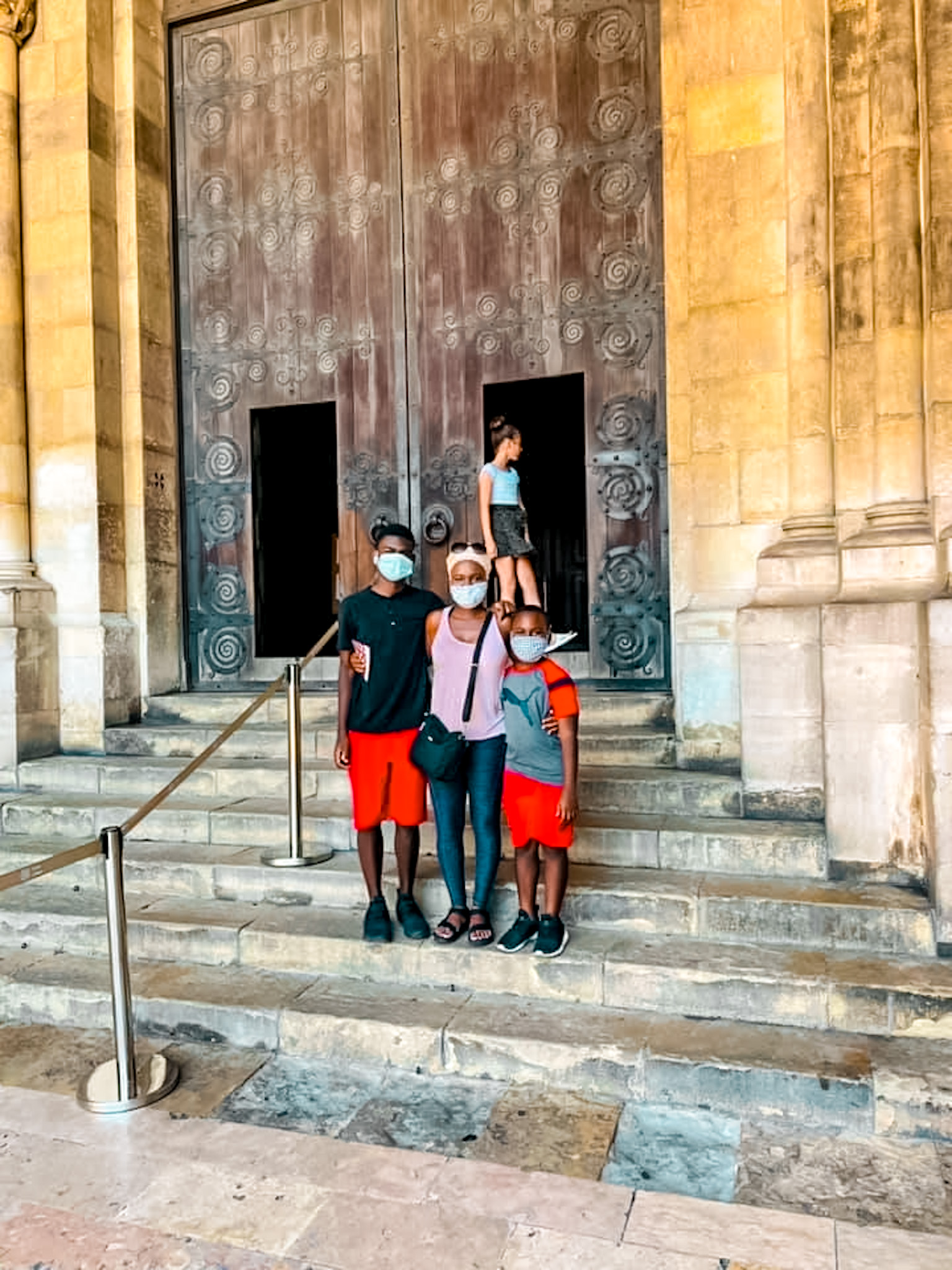
Lisbon Cathedral (Sé de Lisboa)
Cathedrals are high on our list along with museums. We tend to visit one in every city we go to that has one. And Lisbon was no different. We went to the Lisbon Cathedral, the oldest church in the city. It is a beautiful structure, that has changed since being commissioned. It houses beautiful and priceless artifacts.
The cathedral dates back to 1147, built soon after the city was taken back from the Moors. It has survived several earthquakes and been remodeled many times, so you’ll see a mix of Romanesque, Gothic, and Baroque architecture all in one place.
Tips for visiting the Sé:
- Dress modestly, shoulders and knees covered is always a safe bet for churches.
- Pay to visit the cloister area if you can; it’s peaceful and full of history.
- Combine it with a walk up or down through Alfama.
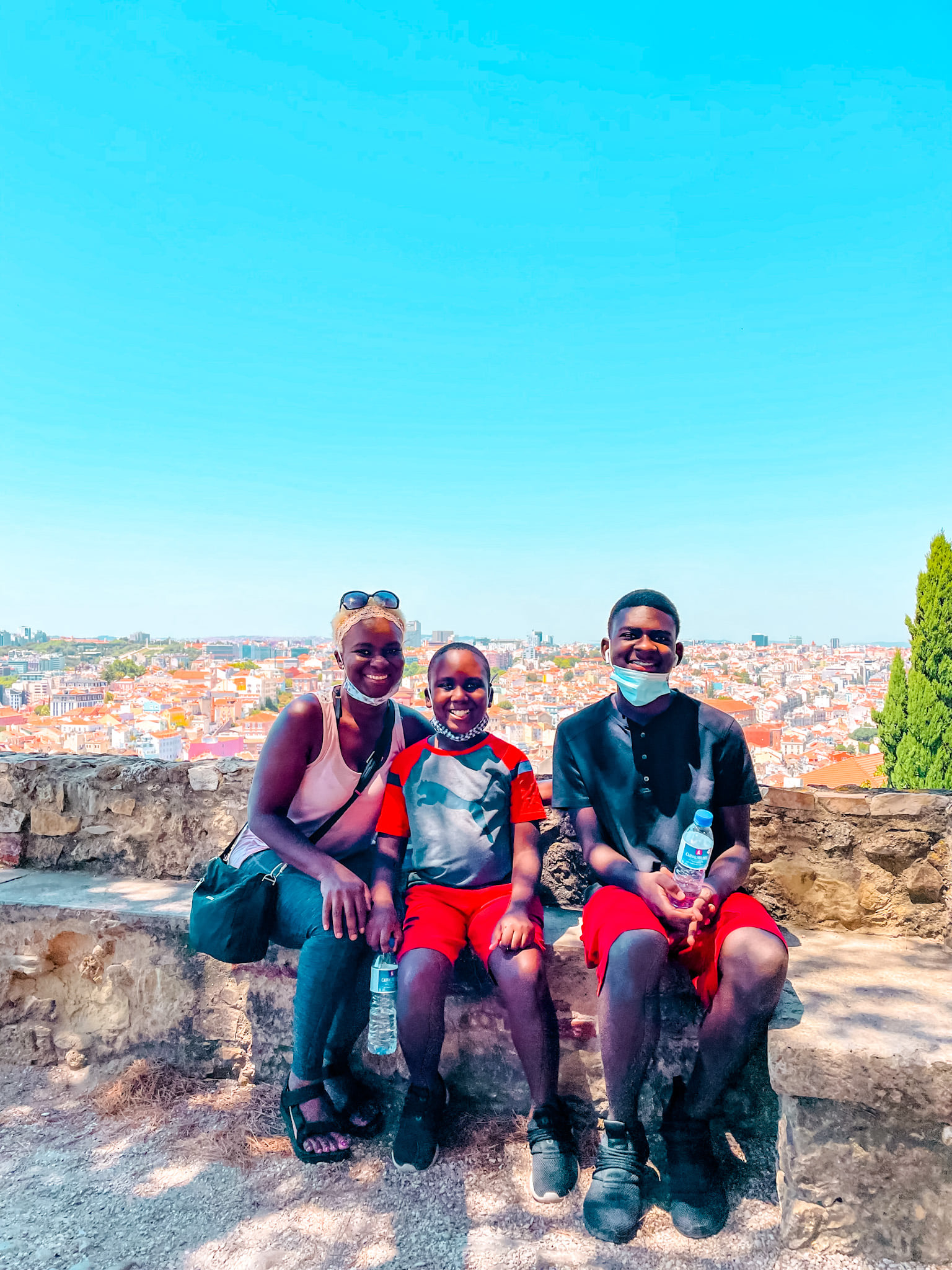
Castelo de S. Jorge: History With a View
Up the hill, and around the way is Castelo de S. Jorge. Perched on a hill, its oldest parts date from the 6th century, when it was fortified by the Romans, Visigoths, and eventually the Moors. The view from the top is amazing. You can rest and recharge at the on-site Cafe, stroll through the garden or take in the breathtaking views.
The hilltop where the castle stands has been fortified by different civilizations for centuries—from Celts and Phoenicians to Romans, Moors, and then the Portuguese after the siege of Lisbon in 1147. Today it’s a national monument and a great place to get a feel for the city’s long, layered history.
Castle tips:
- Go early or late to avoid tour bus crowds and midday heat.
- Give kids time to run around the courtyard and walls.
- Don’t rush the viewpoints, this is one of the best panoramas in Lisbon.

Jerónimos Monastery: Lisbon’s Showstopper
Jerónimos Monastery, another magnificent site to visit. The Jerónimos Monastery is a former monastery of the Order of Saint Jerome. It was secularised on 28 December 1833 by state decree and its ownership was transferred to the charitable institution, Real Casa Pia de Lisboa. This grand religious building is one of the most decorative churches of Portugal. And it is beautiful. Be sure to add this one to your list.
The monastery was built in the early 1500s, funded by taxes on trade from the Portuguese India voyages, and sits near where Vasco da Gama set sail for India. It’s one of the finest examples of Manueline architecture in Portugal (think stone carved into ropes, shells, and maritime symbols) and is now a UNESCO World Heritage Site along with nearby Belém Tower.
Tips:
- Buy tickets online if possible, lines can get long, especially in high season.
- Prioritize the cloisters; they’re stunning and worth the wait.
- Combine it with Belém Tower and a riverside walk.

Belém Tower: Gateway to the Age of Discoveries
Since we were in the vicinity, we walked over to Belém Tower. Because of covid I assume, it is currently closed so we could only take in the beauty from the outside. The area is really nice. With lots of places to eat, relax, the beautiful park to hang out in and people just going about their day.
The Belém Tower (Torre de Belém) was built between 1514 and 1520 in a Manuelino style by the Portuguese architect and sculptor Francisco de Arruda. It is a 16th-century fortification located in Lisbon that served as a point of embarkation and disembarkation for Portuguese explorers and as a ceremonial gateway to Lisbon.
Why you should go even if you don’t go inside:
- It’s an icon of Lisbon and Portugal’s maritime history.
- The river views and green spaces nearby are perfect for a picnic or a break with kids.
- You’re steps away from some of the best pastéis de nata (custard tarts) in the city.
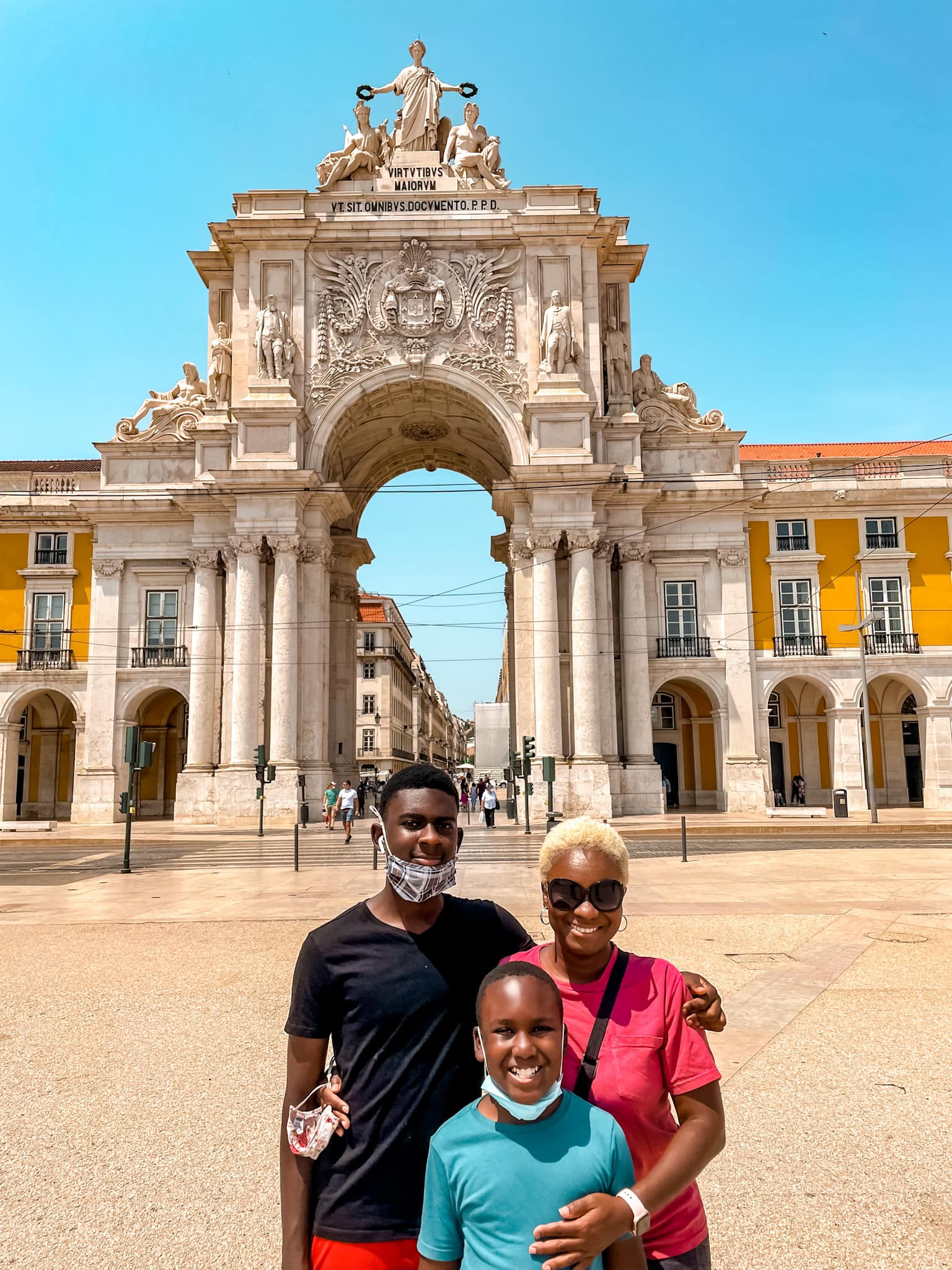
Praça do Comércio: Lisbon’s Grand Waterfront Square
Praça do Comércio, we spent a few days here and a few hours at a time. You could spend hours getting lost in this area. So much to see and do. So much shopping, eating and just plain old having a fabulous time. There is a mall too with lots of things to do to keep everyone busy. Including the kids.
It was built on the site where the old Royal Palace used to exist before it was destroyed by the earthquake of 1755. The bronze equestrian statue of Joseph I of Portugal (1750 – 1777) was designed by Machado de Castro in 1775. Joseph I was King of Portugal during the Great Earthquake. It is a beautiful piece.
Today, Praça do Comércio is still one of Lisbon’s main gathering places, lined with arcades, cafés (including historic Martinho da Arcada), government buildings, and easy access to trams, ferries, and the downtown streets of Baixa.
Don’t miss:
- Walking through the Arco da Rua Augusta for the view over the square.
- Sunset by the water’s edge at Cais das Colunas.
- People-watching from one of the outdoor cafés.
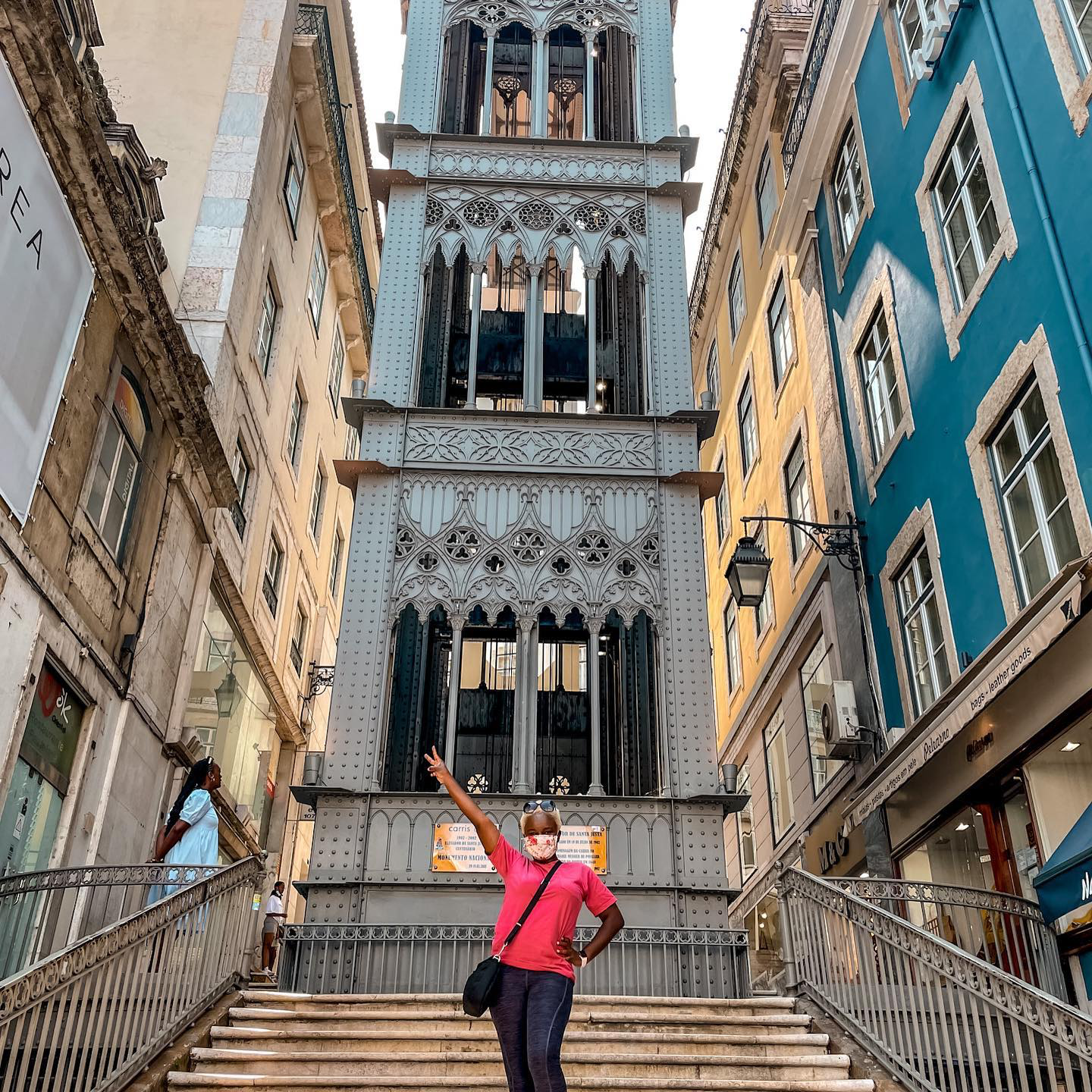
Elevador de Santa Justa
While there, be sure to check out the Elevator de Santa Justa, or the Santa Justa Lift. This is currently out of commission but a sight to behold just the same. Among the urban lifts in the city, Santa Justa is the only remaining vertical (conventional) ones you will find. I met so many tourists in this area. It was great chatting with some and viewing the city through their eyes too.
The lift is a 45-meter-tall Neo-Gothic iron elevator that connects the lower Baixa district with Carmo Square above. It was designed by Raoul Mesnier du Ponsard, an admirer of Gustave Eiffel, and opened in the early 1900s.
Tip: Even when the lift is busy, you can get similar views by walking up through Chiado and Largo do Carmo and then looking back over Baixa from above.
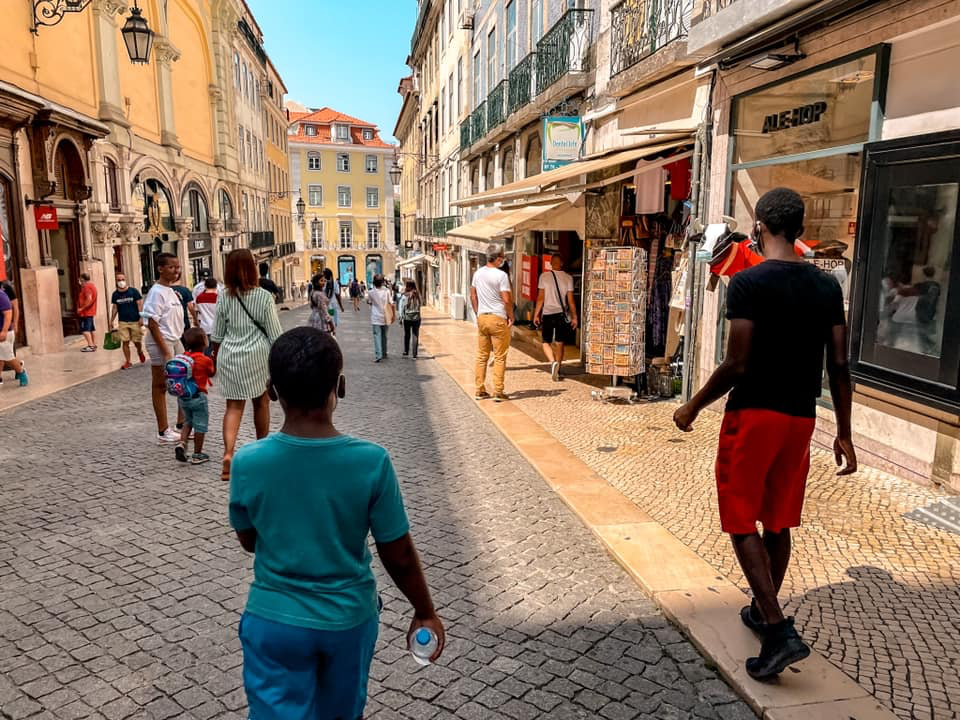
Must-Do Experiences in Lisbon (Beyond Our Itinerary)
Even with seven days, we didn’t do it all. If you’re planning your own trip, consider adding:
- Miradouros (viewpoints): Miradouro de São Pedro de Alcântara and Miradouro da Senhora do Monte offer incredible city views, perfect at sunset.
- Tram 28: The famous yellow tram that winds through some of Lisbon’s most historic neighborhoods. Go early morning or late evening to avoid the tightest crowds.
- Time Out Market (Mercado da Ribeira): A huge food hall with dozens of stalls featuring some of Lisbon’s top chefs and classic dishes under one roof. It shares space with the city’s main food market next door.
- Day trips: Sintra (fairy-tale palaces), Cascais (coastal town), or a quick beach escape along the Estoril coast if you want sand between your toes.
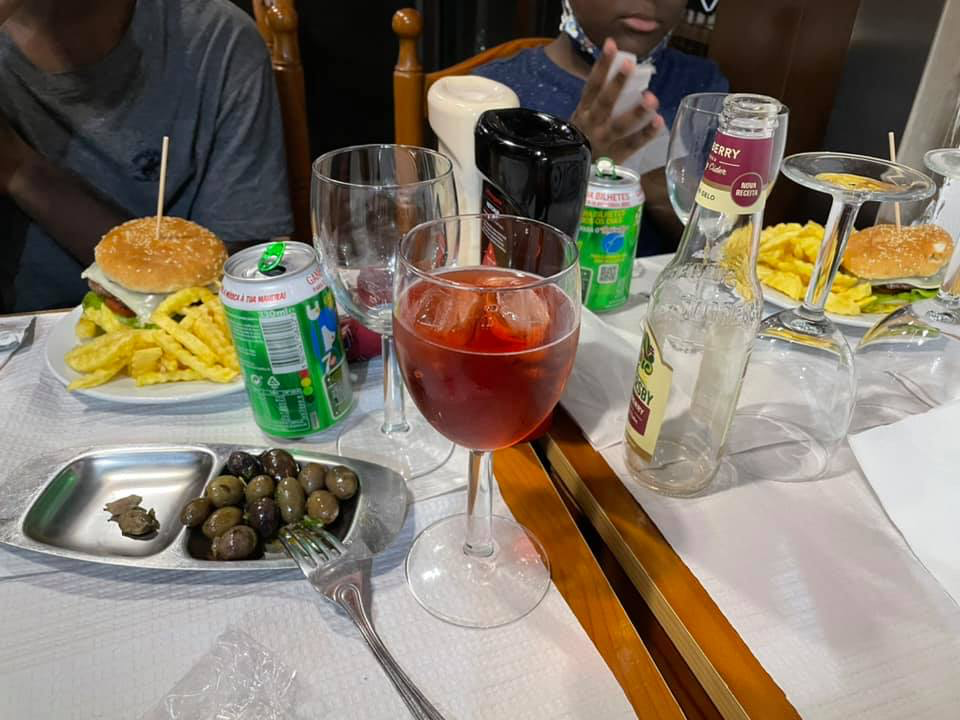
What to Eat in Lisbon: Must-Eat Portuguese Foods
Lisbon is a food city. You can eat fancy if you want, but some of the best things you’ll try are simple, traditional dishes. Add these to your food list:
- Pastel de Nata: The famous Portuguese custard tart, flaky pastry with rich custard inside. You’ll find these all over Lisbon. Many people make the pilgrimage to Pastéis de Belém near the monastery, but local bakeries and spots like Manteigaria also do incredible versions.
- Bifana: A marinated pork sandwich, usually served in a soft roll with mustard or hot sauce. It’s cheap, filling, and very “Lisbon.”
- Bacalhau (salt cod): Portugal has countless ways to cook bacalhau - fried, baked with cream and potatoes, shredded with eggs and onions. Try at least one version while you’re there.
- Grilled sardines: Especially popular in summer and during the June festivals. Simple, smoky, and served with potatoes and salad.
- Frango (piri-piri chicken): Charcoal-grilled chicken brushed with spicy piri-piri sauce. Great option for families.
- Caldo verde: A comforting kale and potato soup, perfect on cooler evenings.
If you want to sample many things at once, head to Time Out Market or a traditional market like Mercado da Ribeira and do your own mini food tour.
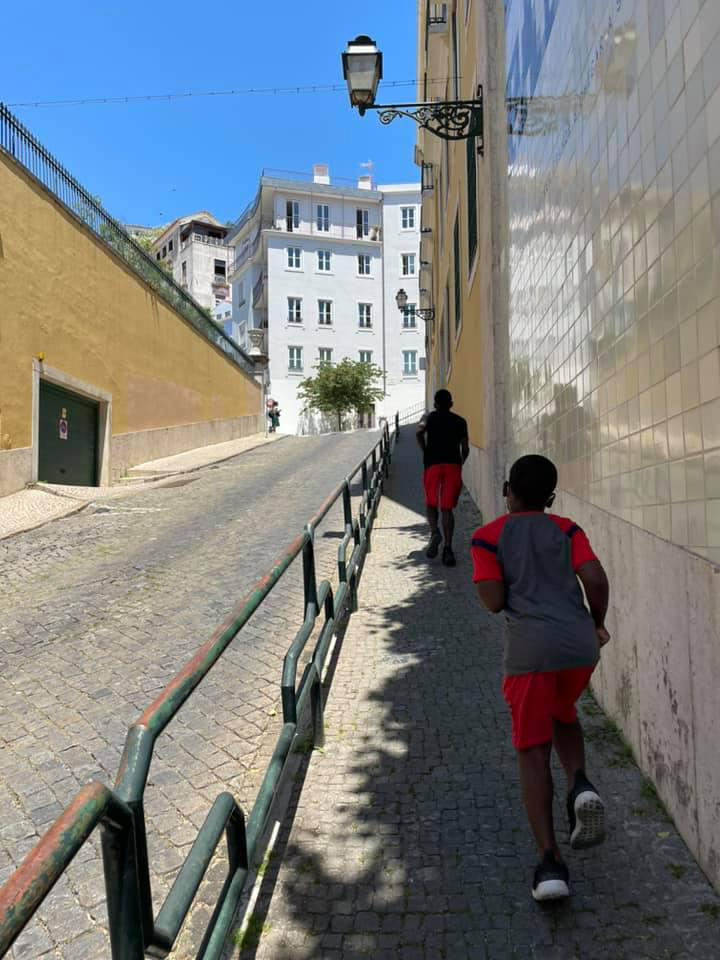
Getting Around Lisbon: Walking, Metro, Trams & Cards
We walked a ton in Lisbon, and honestly, that’s one of the best ways to experience the city. But your feet will thank you if you mix walking with public transport.
Walking
- Expect hills, stairs, and cobblestones, this is a leg workout city.
- Plan shorter, focused walking routes instead of trying to cross the whole city in one go.
- At night, stick to well-lit main streets and be mindful of your surroundings like you would in any big city.
Metro & Buses
Lisbon’s metro and bus network are efficient and budget-friendly. You’ll see ticket machines at every metro station.
- Get a rechargeable card (Navegante/Viva Viagem type) from machines or ticket counters, it costs a small fee and can be topped up as you go.
- You can load single journeys, “zapping” credit, or 24-hour passes that cover unlimited rides on metro, buses, and trams in the city for a flat price. There’s also a 24-hour pass that includes trains to Cascais and Sintra.
Trams & Elevators
- The old yellow trams and funiculars (like Bica and Glória) are both transport and an experience.
- They’re often crowded; watch your belongings and try off-peak times.
Taxis & Ride-Shares
- Taxis and ride-share services are widely available and fairly affordable for short rides, especially if you’re tired or traveling with kids or luggage.

Money & Safety Tips in Lisbon
- Currency: Portugal uses the euro (€).
- Cards vs. cash: Credit and debit cards (especially Visa and Mastercard) are widely accepted in Lisbon, but small cafés and local spots may prefer cash or have card minimums. A mix of cash + card is best.
- ATMs: Use bank-branded ATMs connected to the national Multibanco network and always choose to be charged in euros, not your home currency, to avoid bad exchange rates.
- Safety: Lisbon felt safe to us, and we never felt uncomfortable walking around. Still, like any big city, keep an eye on your bag, especially in crowded trams, tourist squares, and view points.
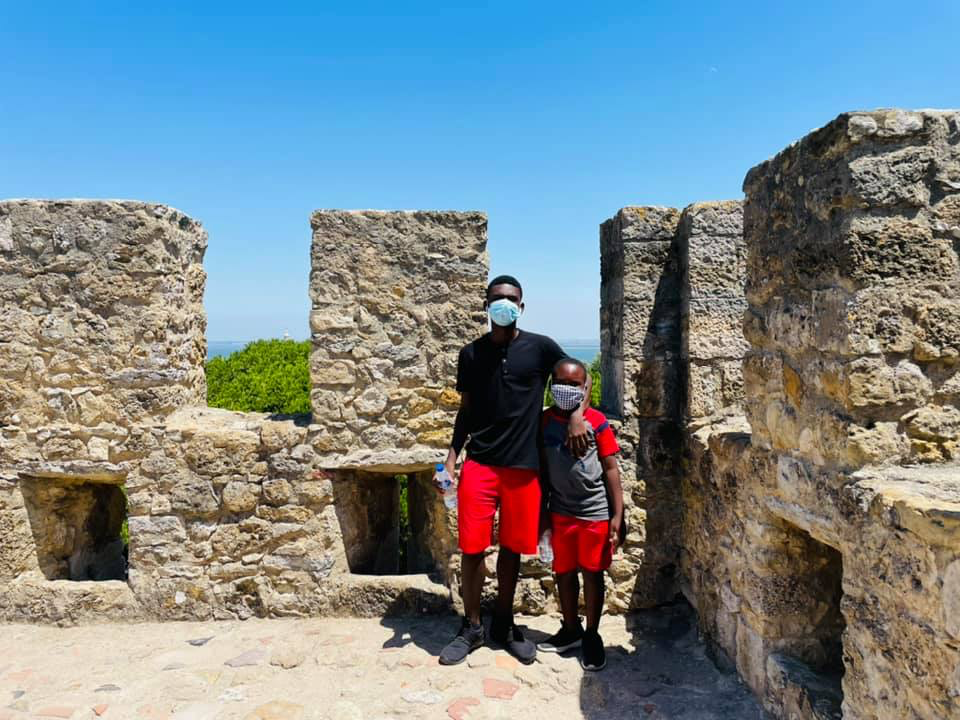
Weather & Best Time to Visit Lisbon
Lisbon has a mild Mediterranean climate with warm to hot, dry summers and mild, wetter winters. Summers are sunny and dry, while spring and fall are warm and comfortable, perfect for walking and sightseeing.
- Best for sun: June–September (expect heat and more crowds).
- Best balance of weather + crowds: late April–May and September–October.
- Winter: Cooler and wetter but still milder than many European cities.
Seven days like we did is a sweet spot, but you can also enjoy Lisbon in 3–4 days if you move faster, or stay longer and use it as a base for day trips.
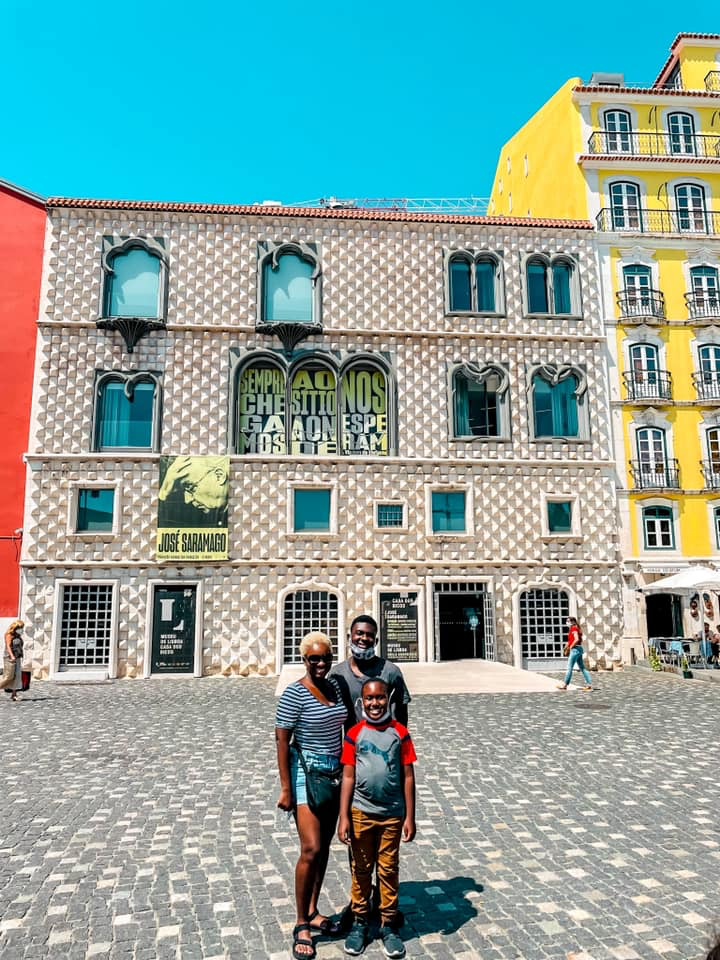
COVID Rules: Our Experience vs. Now
Our experience (at the time we went):
Covid restrictions. Mask is required indoors. You do not have to wear one outside. Tests were required for unvaccinated when we entered. There was an 11 p.m. to 5 a.m. curfew. We did not notice this as we were always home before that time and never up before 5 am. Being in the busy section we could still hear people outside late so I am not sure how the curfew worked. Things change daily so do your due diligence. Hand sanitizing stations are all over every building and business. We felt safe. Be sure to check the requirements at the time of your travels and where you are flying from. It is different for each country you are entering from. And things change frequently. When we went, only the kids needed a covid test as I am vaccinated. We took the test at the Madrid airport, the line was LONG as everyone was doing the same things so get there super EARLY if you want to test at the airport, which most airports are offering testing these days.
As of now: Entry rules and Covid restrictions in Portugal have largely been lifted - negative tests and vaccine certificates are generally no longer required for most travelers, and masks are mostly limited to health-care settings.
Always, always check the latest requirements from your airline and official government sites before you fly, because rules can change.
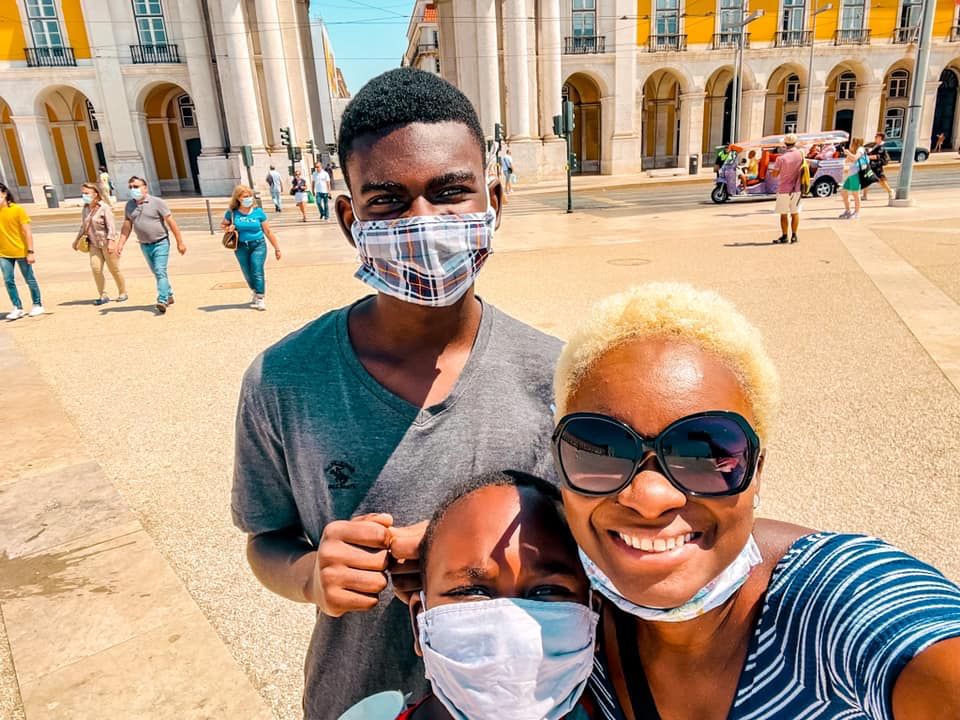
Lisbon Is Magical
Lisbon is magical. We did not spend enough days here and I will for sure be back. If it is not on your list of travels, add it. If it already is, go for it. You will have a blast.
From Fado echoing through Alfama at night to kids running around castle walls, from riverfront walks to custard tarts that ruin you for all other desserts. Lisbon just gets under your skin in the best way.
If you’re dreaming about it, consider this your sign: put Lisbon on your itinerary, give yourself time to slow down, and let the city work its magic on you too.

